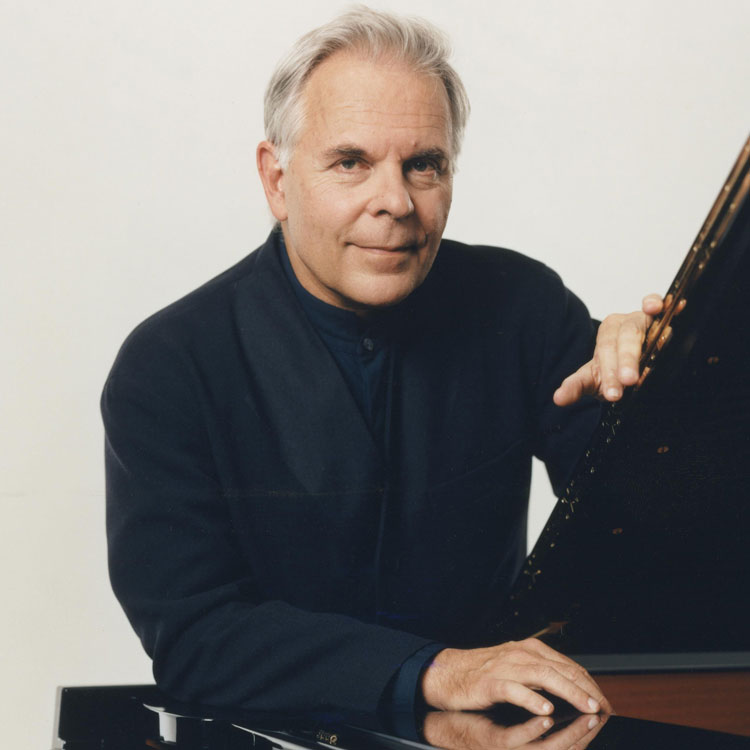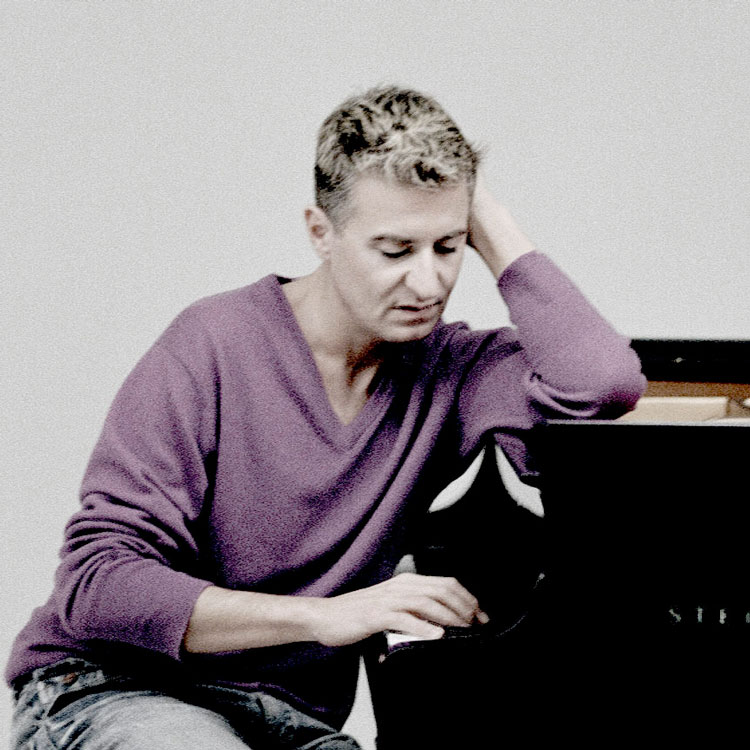Masterclass: Grieg's Piano Concerto
Gramophone
Friday, April 15, 2016
Pianists Stephen Kovacevich and Jean-Yves Thibaudet give their perspectives on Grieg's youthful masterpiece, and Richard Whitehouse provides a detailed analysis
The pianists' views

Stephen Kovacevich
There's steel behind the Concerto's virtuoso element. I would hope that people aren't seduced by the wonderful lyricism into neglecting the brilliance and dissonant qualities of the piece.
Omnipresent are vitality and a bittersweetness. It's very much dance music, but not a Morris dance, of course. You must avoid making it too square, rhythmically. Take off those clogs! At the same time, Grieg's melodic contours have the quality of yearning or wistful melancholy - they're seldom straightforwardly joyous. There's always an ambiguity which performers must bring out, but it's not a conscious thing; you just go for what you finally think the essence of the passage is, and after a lot of sifting it comes out as you feel it. I didn't research Grieg's life when I learnt the piece - I don't think you need to - but I subsequently found out that it was troubled, which only confirmed what is there in the music.
Mentally speaking, the opening is the hardest part: walking on stage, sitting down, hearing the timpani roll and knowing you have to deliver the goods. I've heard the most accurate pianist of our time make a small mistake in performance - and every pianist in the hall sighed with relief. (But I don't think the audience even noticed.)
You can play it grandly and safely, as rhythmically precise as Bach, but I think you should play it freely, even though you risk a possible mishap; poco rubato with just that hint of virtuosity, say, giving a slight accelerando in the middle and coming away.
There's much adventurous piano writing in the first movement, the very quick animato sequences of fifths and fourths in the right-hand call for a great deal of practice (l'40"). At the time it must have seemed strident. The cadenza is wonderfullv controlled – fantastic virtuoso piano writing. The haunting melodies of the slow movement remind me ofPeer Gynt.
Strength isn't one of the Concerto's prerequisites - it isn't long enough. And the quintuplet quavers against the beat (2'43") don't have to be as literal as they do with Stravinsky; they come quite naturally. The coda of the last movement is awkwardly written (7'37"); the right hand is in double thirds while there's some jumps in the left hand. You always need a bit of luck there.
I've never played the Concerto in public, but I'd like to. It proves that recordings can be good without having performed the work. If I did so now, I think, among other things, I'd make the slow movement a bit quicker. My taste has changed; there are many roads to Rome. When music is as good as this, you discover new things. It has a life of its own.
The more musical you are, the more alive you are, the more vital you are on the day and in your preparation, and the more wonderful your performance will be.

Jean-Yves Thibaudet
Throughout his life, Grieg revised his Piano Concerto as he developed as a composer and learned more about structure. Interestingly, though, the tunes weren't changed; they still sound like very natural melodies.
That natural quality is true of the work as a whole, and it's what gives so many different kinds of players so much emotional scope. Perhaps that's why the first recording of the piece you hear often retains a strong association. For me, it has always meant that I've thought of Artur Rubinstein whenever I hear the piece.
Grieg's is not a virtuoso concerto, but rather one that absolutely falls under your fingers. It's a piece that is highly effective, that remains fresh and that also appeals to everybody.
I know it's a cliché, but the first time I went to Norway I could sense the Concerto's relation to its country. It is music about nature and landscape. Ever since I've seen the country I've had those images in my mind when playing the work. It has added another dimension to my understanding of the piece. I now feel the whole work revolves around some sort of nature theme.
The second movement is one of the most beautiful in the repertoire. It's simply overflowing with lovely music. Although in terms of mood it's very much in the same vein throughout, it's very subtle in its detailing. It has a certain freedom in its writing that makes the whole movement far closer to Chopin than to Schumann.
The last movement is very tricky; play it too fast or too slow and it simply doesn't work. I think that's because of the popular folk element in the music - it has to have a very, dare I say it, natural pace and it has to be very atmospheric.
Saying that, Grieg is also meticulous about the elements of tempo and dynamic. There are a lot of details written on the score and while the piece sounds organic it's actually very subtly constructed. Musically, you have to find a certain unity of tempo. In the first movement that unity is clear: the soloist's cadenza is effectively the top of a musical arch. But tempo is crucial throughout. More than any other element, it links all the sections and movements together.
There is real work to be done between the pianist and conductor to ensure such cohesion, but it isn't often done. But it's crucial: there needs to be a unity of shape and dynamics to make the piece truly succeed.
How it works
(Timings refer to Kovacevich's recording)
Critically mauled but publically lauded ever since its premiere on Apri 3, 1869, Grieg's Piano Concerto takes the traditional concerto form and adjusts it to its own ends. Resemblances to Schumann's Concerto, long its siamese twin on disc, have often been stressed but, apart from being in three movements and in the key of A minor, the works have little in common stylistically.
Both open with a peremptory call to attention from the soloist. Grieg prefaces his with a dramatic timpani crescendo, and the descending sequence will have important repercussions later in the work.
Two related themes make up the Allegro molto moderato first subject: a halting, wistful idea fronted by the oboe (0'28"), and a pensive, flowing rejoinder from clarinet, intensified by the strings.
The soloist takes up this material (I'04"), decorating it accordingly. A capricious animato passage, followed by an impulsive rising sequence, allows the soloist dextrous passagework, before the rapt second subject eases in, più lento, on cellos (2'25"). The soloist elaborates on the theme, providing a sequential continuation culminating in an affirmative orchestral tutti, switching back to the minor for the central development section (4'19"). The development has the feeling of a self-contained episode, the initial oboe theme being passed musingly between wind instruments and decorated by the soloist. A curt summons from the brass, alternating with the soloist's opening gesture, initiates the recapitulation (5'39").
The section follows a regular course until the oboe theme, sounded by the whole orchestra, bursts in to announce the cadenza (8'25"). This is a fully written-out display of pianism with a climactic presentation of the oboe theme across the keyboard. At length, the bravura dies down, and the clarinet theme returns wearily on divided strings (11'40"). A brief acceleration sees the return of the opening gesture to bring the movement full-circle.
The Adagio opens in D flat major; it's a heart-warming theme for full strings extending over an unbroken 24 bars. The soloist enters for what proves to be the movement's central section (2'13"), its gently insistent arabesques twice crescendoing before solo wind usher in a heightened return of the main theme (3'58"). Soloist and orchestra (minus heavy brass) unite in their emotional response, the former with additional passagework between phrases. Solo horn winds the movement down to its reflective close.
With only the merest pause, the Finale - Allegro moderato molto e marcato - steals in on staccato clarinet and bassoon. Rapidly ascending, then descending, gestures from the soloist confirm the move back to A minor, and a poco animato first theme is largely entrusted to the latter, its harmonic inflexions undoubtedly influenced by Norwegian Hardanger fiddle playing. The orchestra responds with a rhythmic variant (0'36"), before a varied codetta concludes the opening section and modulates to F major for thepoco più tranquillo second theme (2'41").
The soloist presents an elaborate version of the melody, drawing to a gentle close. The rhythmic first theme resumes its course much as before (5'24"). A precipitate orchestraltutti appears to be preparing for a further cadenza: instead, the soloist launches the A major coda, Quasi presto, with a triple-meter version of the first theme (8 '06").
An animated stretto develops, which spills over into an Andante maestoso restatement of the second theme, resplendent on full orchestra and stretching across the entire keyboard. The soloist's climactic variant and thrilling last ascent are enhanced by the flattened seventh (10'19") in the orchestra, screwing up tension as the Concerto reaches its final triumphant A major chords. Richard Whitehouse
Explore Grieg's life and music...
Top 10 Grieg recordings
Gramophone's guide to the essential recordings of Edvard Grieg's music – from Dinu Lipatti to Anne Sofie von Otter... Read more
Grieg remembered
Reidar Storaas surveys the life and works of Edvard Grieg (Gramophone, June 1993)... Read more
This article originally appeared in the March 2001 issue of Gramophone
The Concerto in its time
-
1843 (June 15)
Grieg born in Bergen, Norway, the fourth of five children
-
1849
Grieg begins piano lessons with his mother, a performer much in demand
-
1858
Composer Ole Bull hears Edvard play and persuades his parents to send him to the Leipzig Conservatory. There he hears Clara Schumann play her late husband's A minor Piano Concerto, on which he later models his own work
-
1863
Moves to Copenhagen, the then centre of Norwegian cultural life. Meets Niels Gade who counsels him to write a symphony. Falls in love with cousin, Nina Hagerup and marries her in 1867. Composes many songs
-
1868
Composes Piano Concerto in Søllerød, Denmark, and premieres it in Copenhagen on April 3, 1869. Its dedicatee, Norwegian pianist Edmund Neupert, performs it that August. It rapidly becomes his most-loved and most-played work
-
1870
In Rome, Grieg visits Liszt who sight-reads the Concerto and encourages him, saying: 'Keep on, I tell you. You have what is needed, and don't let them frighten you.'
-
1872
The Concerto is published in Leipzig by Fritzsch. Its many later revisions are published by Peters
-
1879
Performs the Concerto in Copenhagen, Bergen, Leipzig, Bonn
-
1888
Grieg travels to England where the Concerto and Peer Gynt are resounding successes. Begins decade of extensive European tours
-
1903
Concerto slated by Debussy in GiI Blas after cautious Paris premiere
-
1906-7
Revises Concerto for Percy Grainger at the Leeds Festival
-
1907 (September 4)
Grieg dies in Bergen. A crowd of 50,000 watch his cortege pass by











